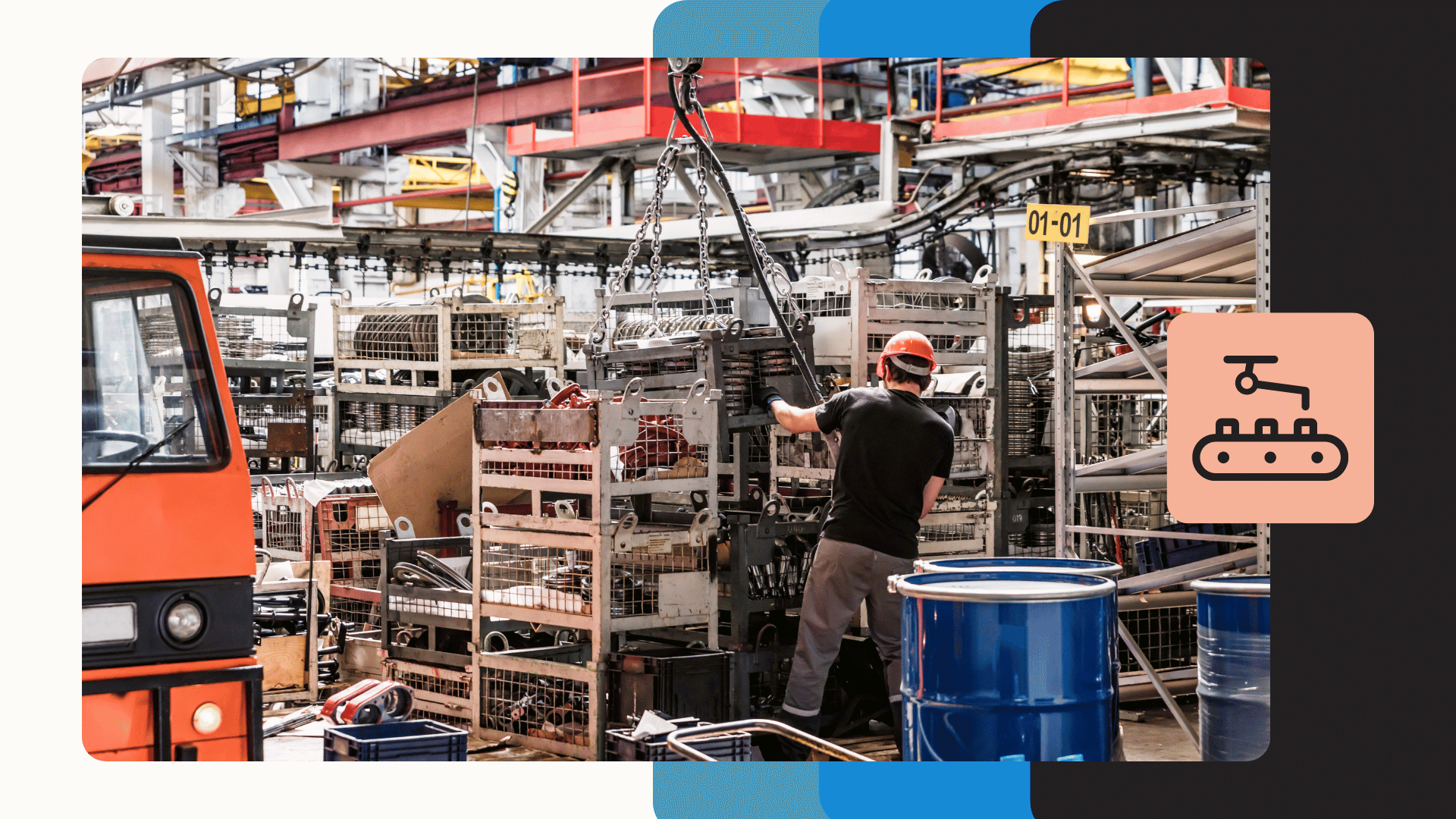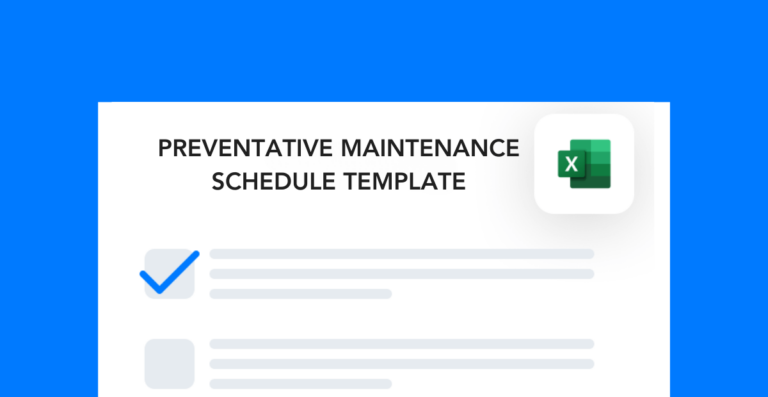Production downtime can easily throw off the flow of an operation, even if you plan it in advance. Oftentimes, unplanned stoppages or slowdowns are the result of preventable circumstances. To reduce operational downtime, you need to understand what causes it and how.
Machinery and equipment failures
The most common cause of downtime in manufacturing is equipment failure. This happens for all sorts of reasons:
- Age of the equipment
- Irregular or insufficient maintenance
- User error
- Quality of the equipment
If your team doesn’t perform routine maintenance to keep machinery running smoothly, then the risk of unplanned downtime increases significantly. Like most areas of operational performance, productivity is all about how proactively you approach potential setbacks.
Having a preventative maintenance program is critical for eliminating production downtime and keeping your operation running smoothly. Here are some other ways you can ensure that your manufacturing equipment stays effective:
- Determine when you’ll need to repair and replace different parts.
- Train employees to properly clean and maintain machinery.
- Create a preventative maintenance schedule that includes all critical equipment.
- Schedule downtime for repairs in advance so you can limit the production impact.
- Track all equipment maintenance activities and inspections using action tracking software.
Human errors and interventions
Workers play a major role in all areas of operational performance. And sometimes, preventable human errors can cause a major blockage on the production line. Some examples of common mistakes include:
- Incorrect equipment usage
- Improper equipment setup
- Poor communication across shifts or departments
- Inability to troubleshoot issues
- Rushing through the process without awareness
- Jamming up the production line for downstream workers
Training is your best defense to prevent these types of errors. Employees should go through process-specific training to understand the impact of their work on the rest of the operation. Make sure you include information on what causes the line to stop and how they can avoid being the cause of the problem.
Planning and scheduling issues
There are a couple ways that planning and scheduling issues affect production. First, if you don’t have a good demand forecast, that can put strain on your workforce to keep up. Workers may rush and overload the production line, resulting in unexpected downtime. On the flip side, maybe not enough workers show up and you’re unable to keep the line properly staffed.
Another example is the balance of competing resources. Say your inbound and outbound teams share equipment to keep their ship docks running. If you don’t allocate shared resources to meet the needs of the operation, that may leave specific areas without the equipment they need to stay productive.
The only way to avoid these setbacks is to have a dedicated, accurate planning system in place. You may consider using APS software or doing regular production schedule audits to make sure you’re setting realistic operational goals. If you’re seeing too much downtime, consider lowering your outputs for a specific period of time until you can keep up or find a new target to hit.
Quality control problems
Quality issues come from all types of sources—from defective raw materials to human error within the process. While some issues just create scrap, others create rework and production downtime.
To prevent these problems, you need to have a standard quality assurance process in place. This is especially true in manufacturing, where any combination of thousands of variables can affect quality. Your process should include a step for investigating the root cause of quality errors, so you can decide how to prevent them moving forward.
Adopting a Six Sigma system or implementing the ISO 9001 framework are two great ways to formalize your QA process. This can help you figure out why the line gets backed up when there’s a quality issue. That way, you can eliminate production disruptions while your team takes measures to rework and investigate errors.
Setup and changeovers
Changing over shifts or setting up equipment almost always involves some sort of downtime. Luckily, you can optimize this process to reduce the time it takes to complete.
You might have issues with changeovers if your process is too complex or lacks standardization. When workers take the same steps each time, it’s easier to find bottlenecks. If they do it differently each time, you won’t know what the cause of a slow transition is.
Start there—by figuring out what’s causing the slowdown. Then, come up with variations you can try to speed things up. Maybe you need to create a standard process and train workers to follow it. Or maybe you need to come up with a better 5S system to make sure the right tools and materials are available for quick transitions.
And don’t forget to ask your employees what they think is slowing them down. You might be surprised to find that the layout of the workstation or the placement of one piece of equipment is the cause. Sometimes, the smallest changes can have a huge impact on productivity.
Unplanned maintenance activities
Manufacturing equipment requires constant maintenance to function at the highest level. Maintenance activities, however, can create unexpected production downtime if you’re not careful.
First, there’s the tangible lost time that happens when you shut down a line for unplanned service. But you also lose out on employee productivity. As workers sit and wait for the line to come back up, they fall out of optimal flow state. Once the operation starts up again, it can take a while for everyone to get back to the rhythm they were at before.
The main reason for unplanned maintenance is a lack of preventative maintenance. Without routine service, manufacturing equipment and machinery can break down much faster than its expected lifespan. Poor documentation practices or the failure of your technicians to accurately predict the amount of time needed for upkeep can also lead to unexpected shutdowns.
The best way to avoid these is to keep your equipment in the best shape possible. You can do it by:
- Scheduling and monitoring maintenance activities with action tracking software
- Standardizing how your team documents equipment maintenance
- Carefully managing equipment changes to avoid critical malfunctions
- Setting up alerts when inventory of spare parts becomes too low
- Using predictive maintenance tools to monitor the health of your machinery
- Performing routine equipment inspections to address issues before they multiply
You also want to make sure you always have enough spare parts on hand, so your team can fix equipment efficiently. Not having the right repair materials available can cause major production downtime (potentially weeks) if you’re not prepared.
Supply chain disruptions
Supplier issues upstream in the manufacturing process tend to cause production downtime. If your suppliers fail to meet their contractual obligations, you may not have everything you need to keep production running. Sometimes these issues are the supplier’s fault, and sometimes they’re related to environmental or political events. Examples include:
- Environmental conditions that impact availability of raw materials
- Weather-related shipping delays
- Workers strikes or union issues
- Supplier acquisition, bankruptcy, etc.
- Political instability in supplier countries
- Global economic disruptions
Since many of these variables are out of your control, the best strategy against them is to work with a diverse pool of vendors and suppliers. By working with suppliers in different regions, you can close gaps to make sure that you can always source the materials you need for production.
External environmental factors
Of course, there are always external factors at play that may affect productivity. The most common examples of these include weather incidents, power outages, facility damage, and events or incidents happening in the local community. These factors can trigger issues with your facility or equipment, and they might even cause emergency safety and security incidents.
One of the best defenses against environmental factors is a thorough emergency plan. Your plan should outline your team’s response strategy for things like fires, storms, active shooters, security breaches, or major safety events. It should also include emergency contact information and delegate tasks to certain people or positions. That way, when an emergency happens, you know exactly who’s in charge of which response tasks.
Proper facility maintenance is also essential to avoiding production downtime related to environmental factors. For example, regularly auditing the structural integrity of your site ensures that it’s protected from inclement weather. You should also have a backup power source ready to use in case of power outages.
Reducing downtime risk with Frontline EHS
Your manufacturing process can only be as efficient as the data you use to make decisions about quality, production, and safety. That’s why at Frontline Data Solutions, we develop EHS software products that reduce operational risks, improve team performance, and keep employees safe.
Our management of change and action tracking tools make it easy to ensure the careful documentation and implementation of critical tasks and operational changes. Meanwhile, our learning management and contractor management systems allow you to manage compliance for both employees and contractors. With these solutions in place, you’ll be able to go beyond compliance and reach new levels of overall performance.
For more information, schedule a demo with our sales team or head to our product videos page to see what our system can do!
Other posts you might like…
No posts

